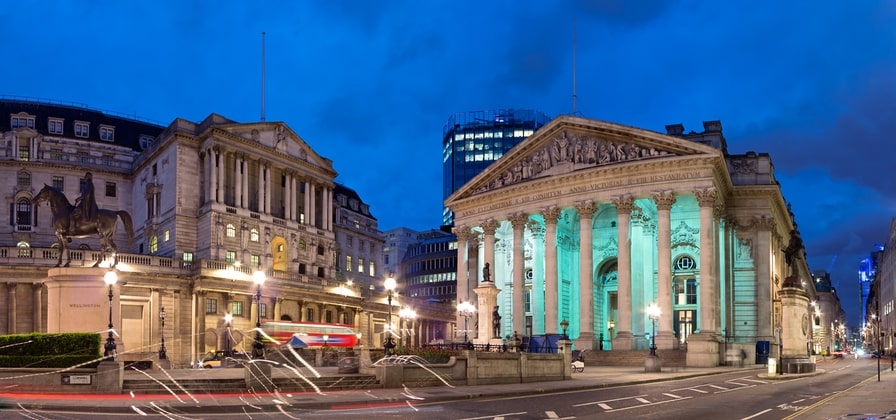- ไทย
- English
- 简体中文
- 繁体中文
- Tiếng Việt
- Español
- Português
- لغة عربية
การวิเคราะห์
Firstly, as markets had expected, the dovish pivot that begun in December – with the inclusion of the word “any” to frame potential further policy tightening – continued, as the Committee shifted guidance to describe future “adjustments” to the target range for the fed funds rate. Clever – signalling to markets that the next move is likely to be a cut, but not going all the way to say so explicitly, while also leaving the door open to a renewed tightening in policy, or at least a more hawkish bent to Fedspeak and delayed easing, were upside inflation risks to emerge.
Then, at the press conference, eventually, Powell conceded that a March cut was “not the base case”, even as markets had assigned a greater-than-even chance of the Fed firing the starting gun on the easing cycle at that meeting. Again, clever – pushing back on market rate expectations, to keep financial conditions tight(ish) and bear down on inflation, but providing optionality to cut at that meeting if the economy were to evolve in a poorer way than currently foreseen.
On which note, Powell did outline some conditions under which cuts may come sooner than the base case expects – ‘unexpected labour market weakening’ is one, placing greater emphasis than usual on the 2 jobs reports between now and the March FOMC, while financial stability concerns will likely be another. Once more, intelligent policy – giving markets a hint of what the Committee will be paying most attention to in the realm of downside economic risks.
Clearly, policy optionality remains the ‘name of the game’ for the FOMC, as was also shown by Powell’s remarks on inflation, in refusing to be drawn on either a level that inflation must reach, or how many more months of disinflationary data the Committee want to see, before cutting rates. Again, clever policy, whereby policymakers – assuming the now-embedded disinflationary trend continues – can, reasonably, at any stage, point to now having enough data to confirm that inflation is sustainably on its way “towards” 2%.
That “towards” is important, implying that policymakers are not seeking a particular price measure to dip under the 2% handle. Instead, just needing to be sure that inflation is on its way there, and will stay there, even if policy is made less restrictive via rate cuts.
This all leads to a number of conclusions:
- This is a flexible FOMC. It is one where policymakers are likely to have the option to cut, and begin the easing cycle, at any point over the next 12 months. It will likely only begin when, and only when, policymakers are convinced that easing will not undo the hard yards of the last two years of rate hikes, and risk a resurgence in price pressures. Powell & Co., as yesterday’s pushback on March cut pricing showed, shan’t be bullied by financial markets
- The experience of 2021/22 is still fresh in the Fed’s mind. Policymakers likely remain scarred by having dismissed price pressures as ‘transitory’, only to then need to embark on the fastest tightening cycle in four decades. This will likely lead to the FOMC erring on the side of caution, preferring to stay restrictive for too long, then easing more rapidly, as opposed to easing sooner, and potentially having to pause – or even U-turn on – a cutting cycle
- The FOMC are purely data-dependent. If inflation becomes stickier, cuts will be postponed; if the labour market rolls over more rapidly, cuts will be brought forward. The data will inform all as to the likely course policy will take, with the overall trend of said data being substantially more important than one or two individual prints. Market reaction to downside data surprises will be particularly interesting, given the Pavlovian-esque conditioning most participants have undergone to expect a cut as soon as one bad print crosses newswires. As noted above, policymakers will be loathe to overreact to negative news, unless and until it becomes a trend
- March is either a nothingburger, or a big cut. Though there are still 6 or so weeks until the next FOMC, it’s relatively obvious that it will lead to rates remaining unchanged, perhaps with a further nod towards easing at the May meeting, or result in a significant cut to the fed funds rate, as a result of dramatic (& unexpected, at this juncture) labour market weakness, significant financial stability concerns (e.g. regional banks/CRE), or another unforeseen black swan event. Were goods inflation to reaccelerate, as services prices remain sticky, the same scenario could also easily pan out at the May meeting, though there is clearly a long way to run before then
เนื้อหาที่ให้ไว้ในที่นี้ไม่ได้จัดทำขึ้นตามข้อกำหนดทางกฎหมายที่ออกแบบมาเพื่อส่งเสริมความเป็นอิสระของการวิจัยการลงทุน และด้วยเหตุนี้จึงถือเป็นการสื่อสารทางการตลาด แม้ว่าจะไม่อยู่ภายใต้ข้อห้ามใดๆ ในการจัดการก่อนการเผยแพร่การวิจัยการลงทุน แต่เราจะไม่แสวงหาผลประโยชน์ใดๆ ก่อนที่จะส่งมอบให้กับลูกค้าของเรา

